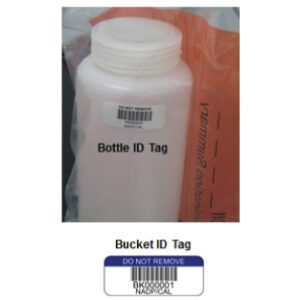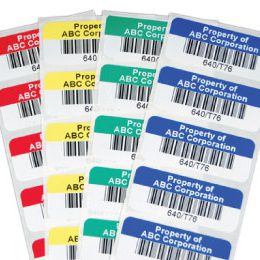Think your labels are just stickers? Think again. In the world of medical device logistics, a label is a high-stakes tool for traceability, compliance, and inventory control. When labels fail, the entire supply chain pays the price.
From manufacturing and distribution to hospitals and clinics, labels are the thread connecting every phase of the medical device supply chain. This article breaks down the impact of labeling on medical device supply chain efficiency and shows how investing in smarter labeling pays off in accuracy, speed, and compliance.

Why Labeling Is the Hidden Backbone of Supply Chain Performance
The medical device supply chain relies on precision and visibility. At any point, you need to know exactly where a device is, where it’s been, and whether it’s compliant with regulations. That’s where labeling comes in.
Effective medical device labeling enables:
- Accurate inventory counts in real time.
- Automated tracking through barcodes.
- Seamless regulatory reporting with traceable Unique Device Identification (UDI).
- Faster receiving and distribution with scannable, legible label data.
Poor labeling, on the other hand, introduces friction: mislabeled items, unreadable barcodes, shipping delays, product returns, and even compliance violations.
Labeling Solutions That Reduce Errors and Speed Up Fulfillment
Errors in the medical device supply chain can be costly and dangerous. Many of these issues originate with label failures: smudged print, peeling edges, incorrect formats, or missing data. These small missteps often snowball into bigger problems, like shipment delays, product returns, or even regulatory flags.
Here’s how better labeling can directly improve fulfillment speed and accuracy:
Print Durability That Lasts Through It All
Labels must endure sterilization, moisture, abrasion, and chemical exposure. Durable print technology ensures that barcodes and text stay legible throughout the product’s lifecycle, reducing scan errors and relabeling.
Data Formatting That Aligns With Compliance
Incorrect or inconsistent data can hold up shipping and cause downstream headaches. Proper formatting, especially for UDI and international compliance, keeps distribution running smoothly and ensures customs or regulatory checks go off without a hitch.
Barcode Readability for Faster Processing
Warehouses and healthcare facilities depend on fast scans. High-contrast, precisely printed barcodes placed consistently save time at every scanning point, which means faster receiving, picking, packing, and auditing.
Adhesive Reliability in Real-World Conditions
Labels don’t just need to stick. They need to stay stuck through heat, refrigeration, friction, and time. Consistent adhesive performance ensures that labels won’t lift during transport or fail during product use.
How Medical Device Labeling Supports Inventory Visibility and Real-Time Tracking
Inventory tracking is only as strong as the labeling behind it. In complex global networks, knowing what’s in stock and where it’s located is critical. Smart, durable, and compliant labels form the foundation of real-time visibility.
Serialized Barcodes and UDI Data for Device-Specific Tracking
Every medical device should have a unique identity. Serialized barcodes and UDI-compliant formats enable granular tracking across manufacturing, shipping, warehousing, and clinical use. These codes allow seamless integration with regulatory databases and internal systems alike.
Scannable Formats Compatible With WMS and ERP Systems
Labels must be designed for system compatibility, not just physical durability. Scannable label formats that align with warehouse management systems (WMS) and enterprise resource planning (ERP) platforms ensure reliable data capture and smooth software integration at every stage.
Durability in Transit and Storage
Supply chains don’t exist in climate-controlled bubbles. The labels must hold up whether your devices are stored in humid warehouses or moved through refrigerated cold chains. Materials and adhesives that resist moisture, abrasion, and temperature swings prevent misreads and product misplacement.
The Role of Labeling in Regulatory Reporting and Compliance
Regulatory agencies like the FDA require accurate and legible labels for every medical device. Labeling errors can lead to product recalls, failed audits, and regulatory fines.
To stay compliant, labeling solutions must:
- Include UDI-compliant data formats.
- Maintain readability after sterilization or shipping.
- Be made with approved materials and adhesives.
- Ensure consistent placement and size per device category.
Whether you’re preparing a Class II device for distribution or tracking a high-volume shipment, regulatory documentation hinges on the integrity of your labels.
Label performance can make or break your logistics flow. Electronic Imaging Materials helps medical device manufacturers design and implement labeling solutions that support compliance, increase scan reliability, and reduce operational friction.
Common Supply Chain Pitfalls Caused by Bad Labeling
Even one bad label can create ripple effects throughout your supply chain. Below are some of the most frequent issues we help solve, and how they damage efficiency and profitability.
Returns Due to Missing or Incorrect Barcodes
If barcodes are printed incorrectly or omitted entirely, the result is often product returns, relabeling, and frustrated end users. This slows distribution and creates unnecessary overhead.
Slow Processing at Receiving Docks
When labels are hard to scan or require manual verification, receiving teams are forced to slow down or double-check data by hand. This leads to bottlenecks at the dock and delays in getting products to the next stage.
Inaccurate Inventory Counts From Label Degradation
Labels that fade, smear, or peel during transit and storage compromise your ability to track inventory accurately. This can lead to stockouts, overages, and missed reorder points.
Product Holds or Quarantines Triggered by Noncompliant Labeling
Regulators and internal quality teams may place shipments on hold when labels don’t meet compliance standards. That means quarantined product, halted revenue, and additional auditing or corrective work.
Best Practices for Optimizing Medical Device Supply Chain Labels
Want to future-proof your labeling strategy? Follow these supply chain-aligned best practices:
- Standardize label formats across facilities and vendors. This reduces variation and ensures consistency during audits and integration.
- Use durable materials that survive sterilization, shipping, and handling. Choose substrates and adhesives that withstand abrasion, heat, cold, and moisture.
- Incorporate scannable data fields that match your WMS or ERP inputs. This enables real-time inventory tracking and reduces manual entry.
- Test labels in real-world scenarios before large-scale rollout. Simulate storage, transit, and sterilization conditions to validate durability and readability.
- Partner with labeling experts who understand your regulatory and logistical environment. Work with pros who can spot risks and tailor label specs to your operational needs.
A little front-end planning can prevent back-end chaos.
Your Labeling Partner for Smoother, Smarter Supply Chains
Electronic Imaging Materials is a strategic partner for medical device companies navigating complex logistics and strict compliance standards.
Our solutions help you:
- Improve label performance at every supply chain touchpoint.
- Reduce relabeling, returns, and compliance risks.
- Increase speed and accuracy in distribution.
If you’re ready to turn labeling from a bottleneck into a competitive advantage, we’re here to help. Contact us today for a supply chain labeling consultation built for your reality.





